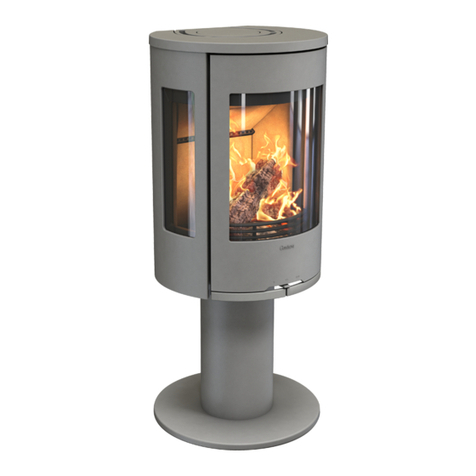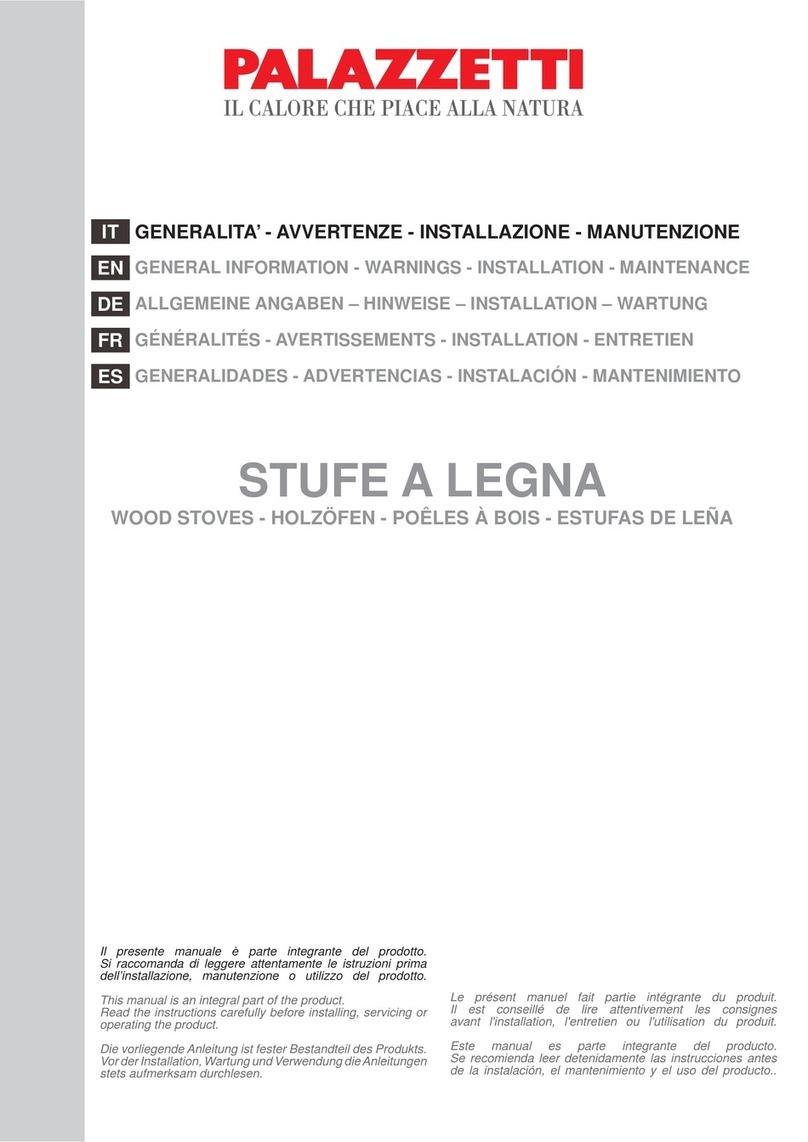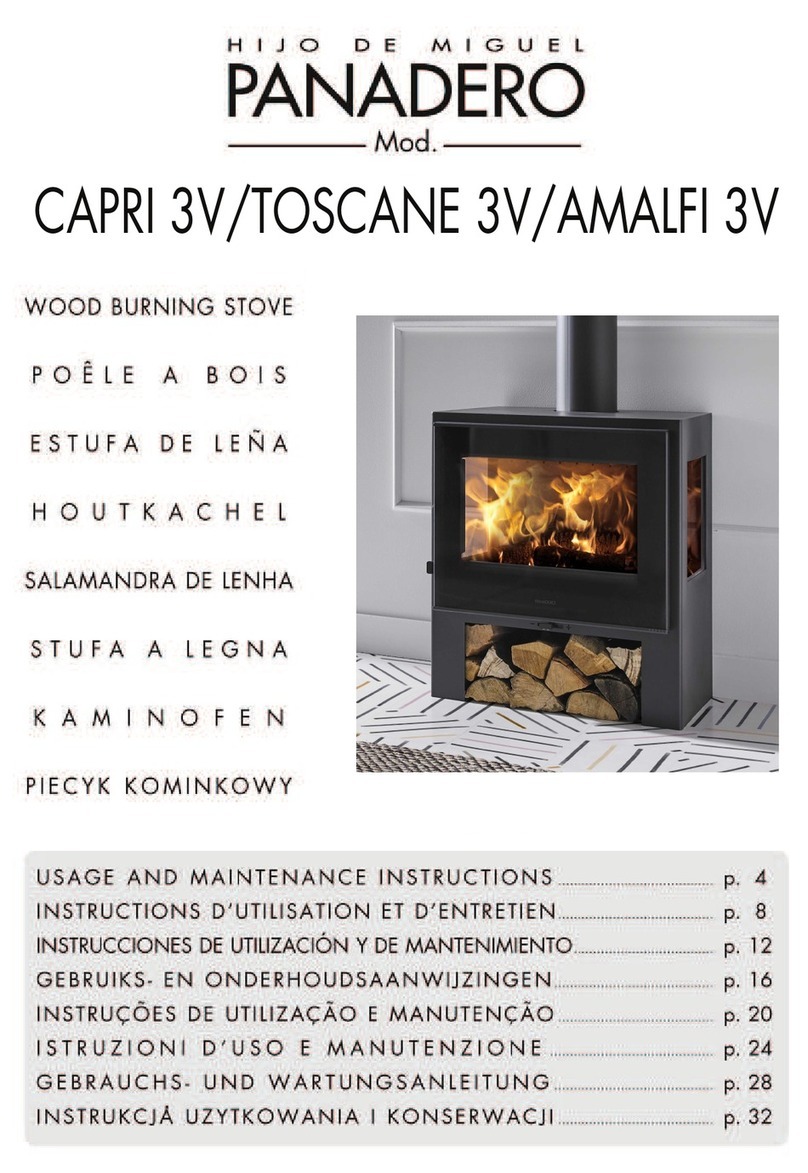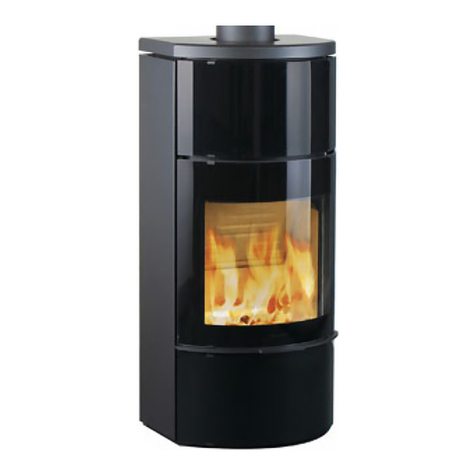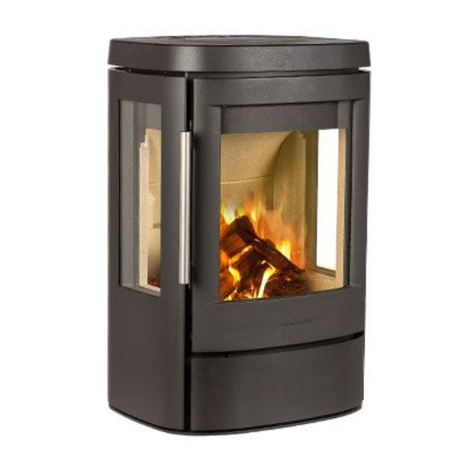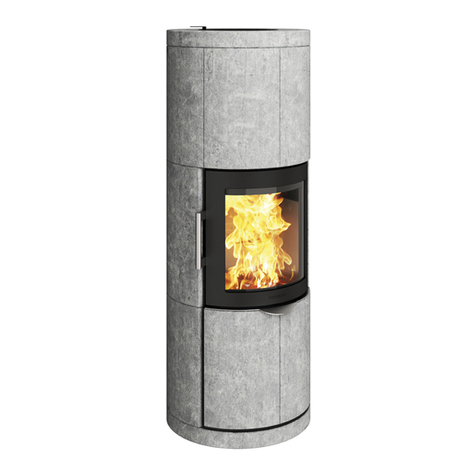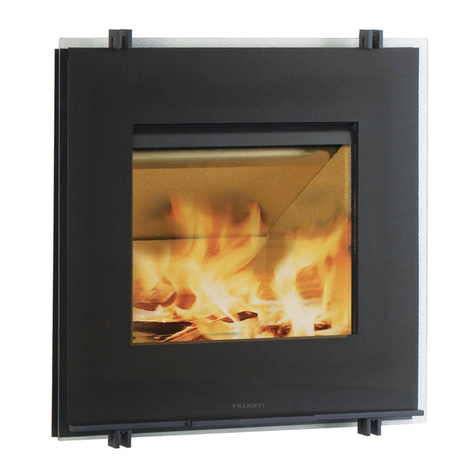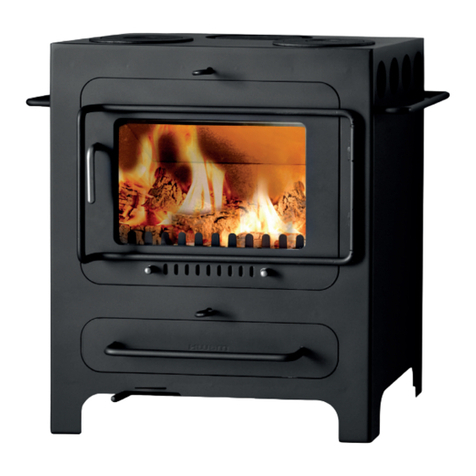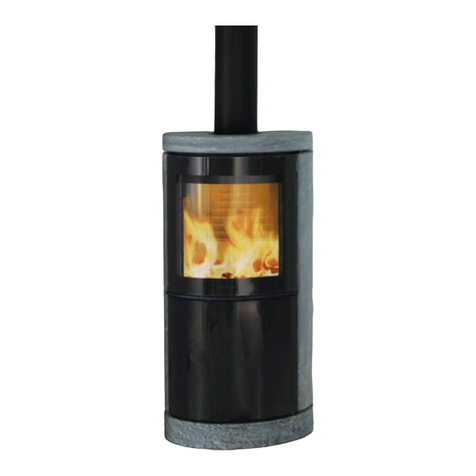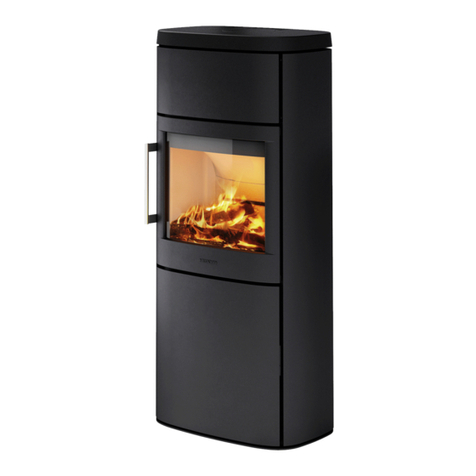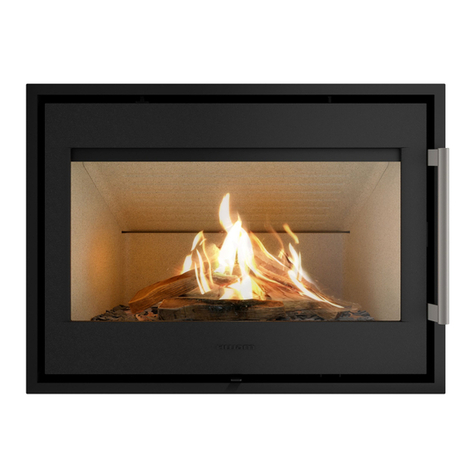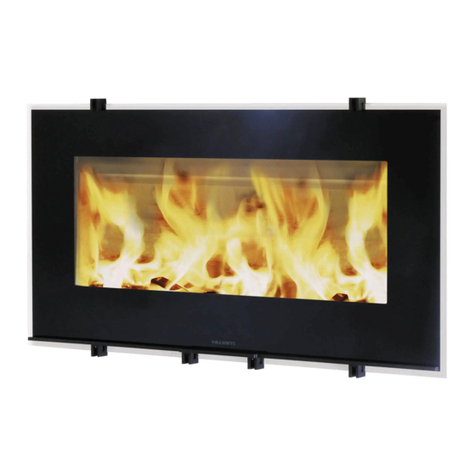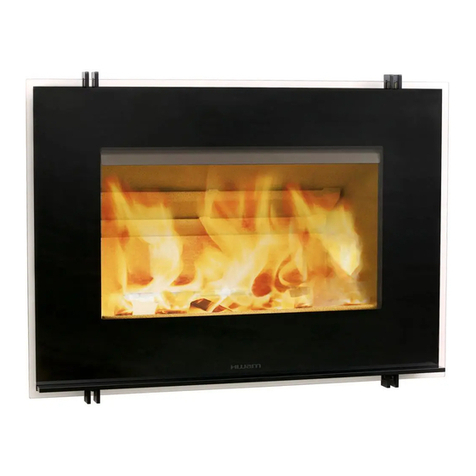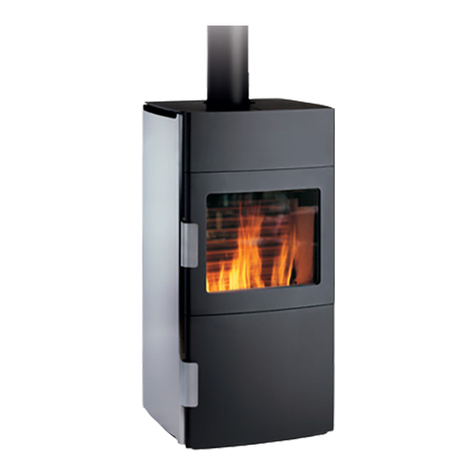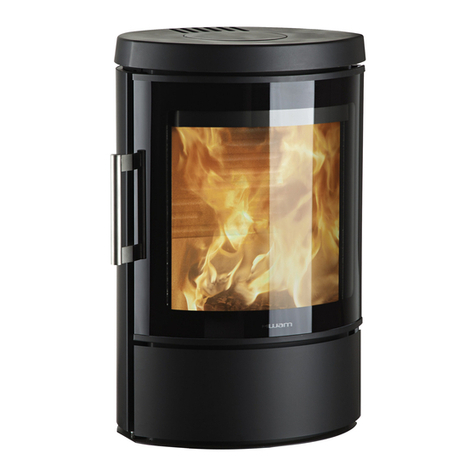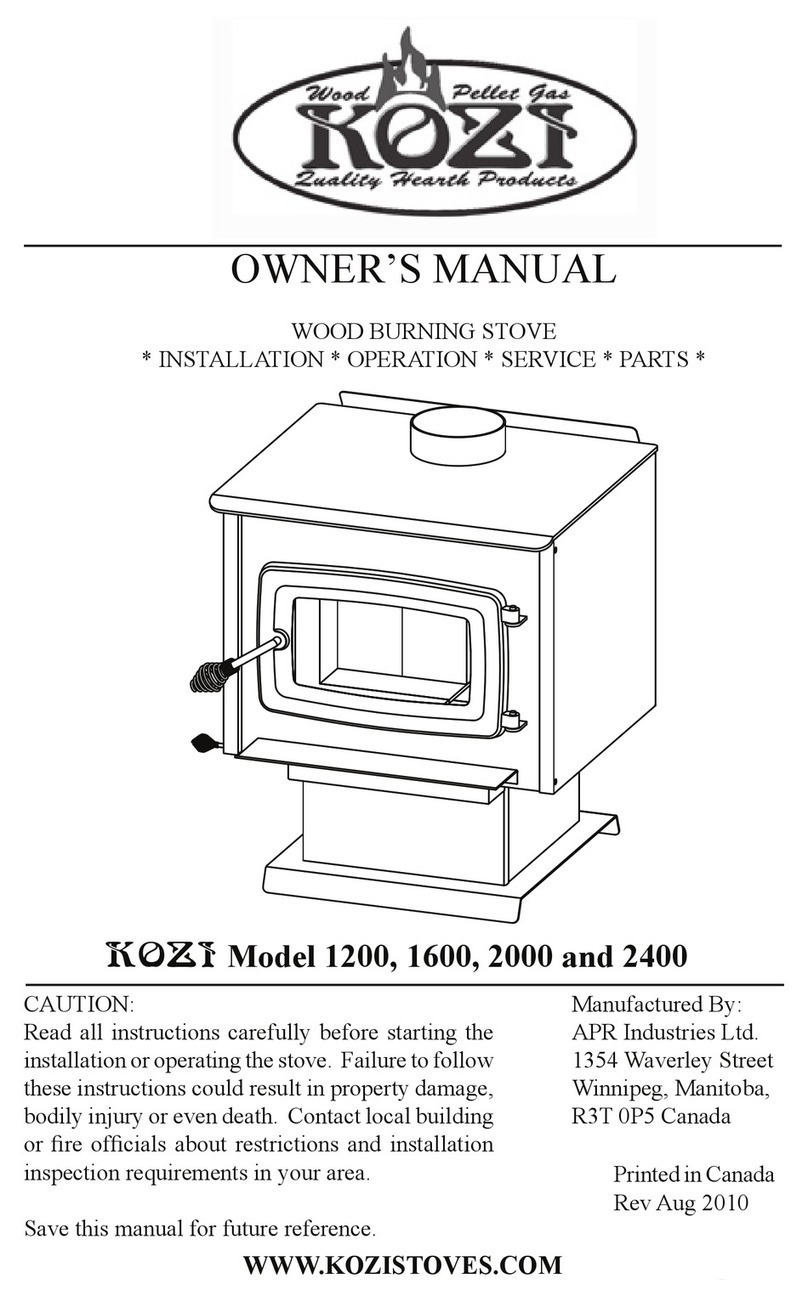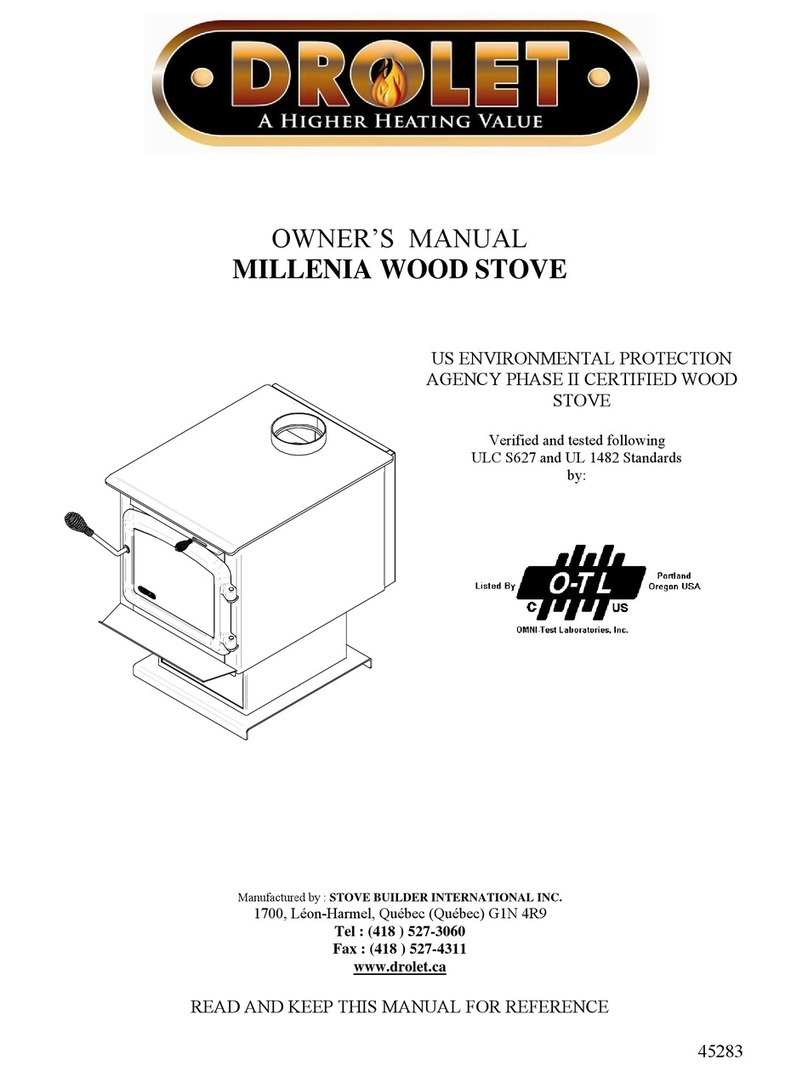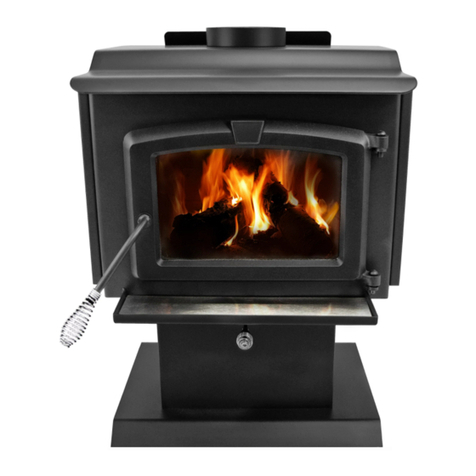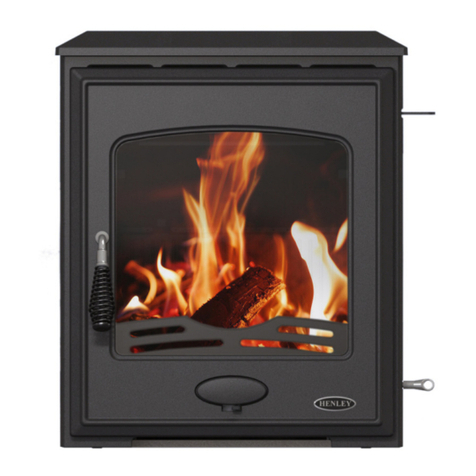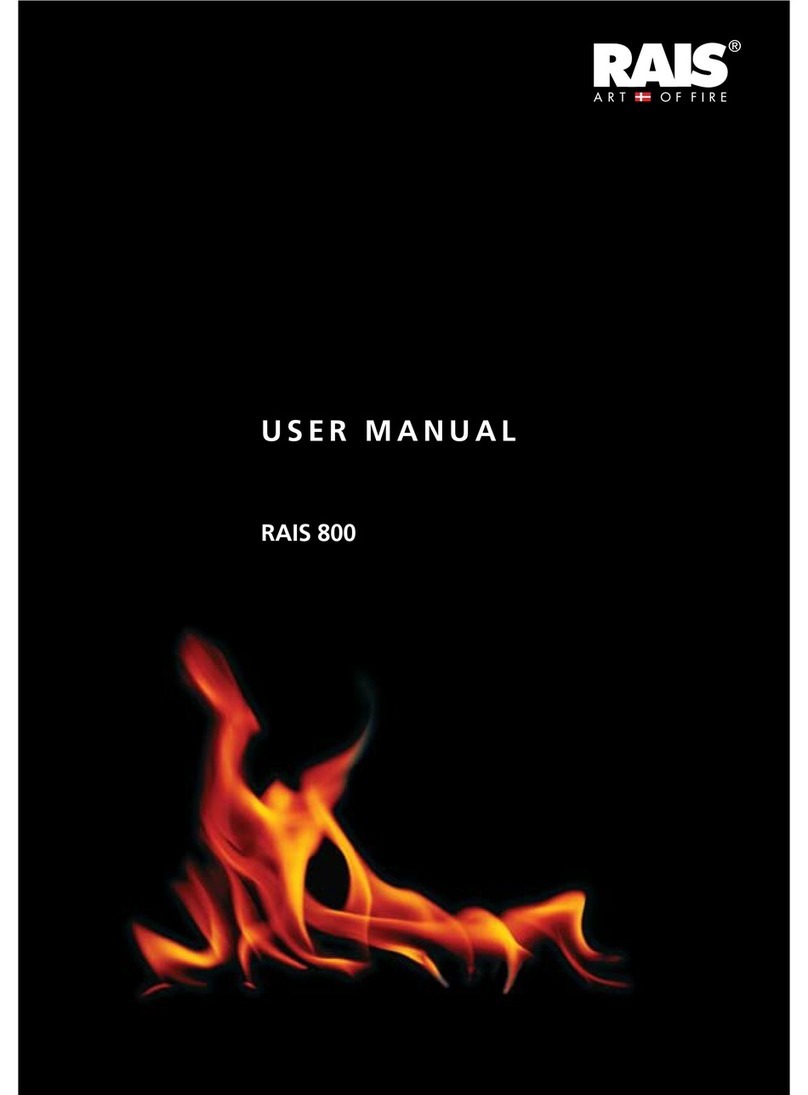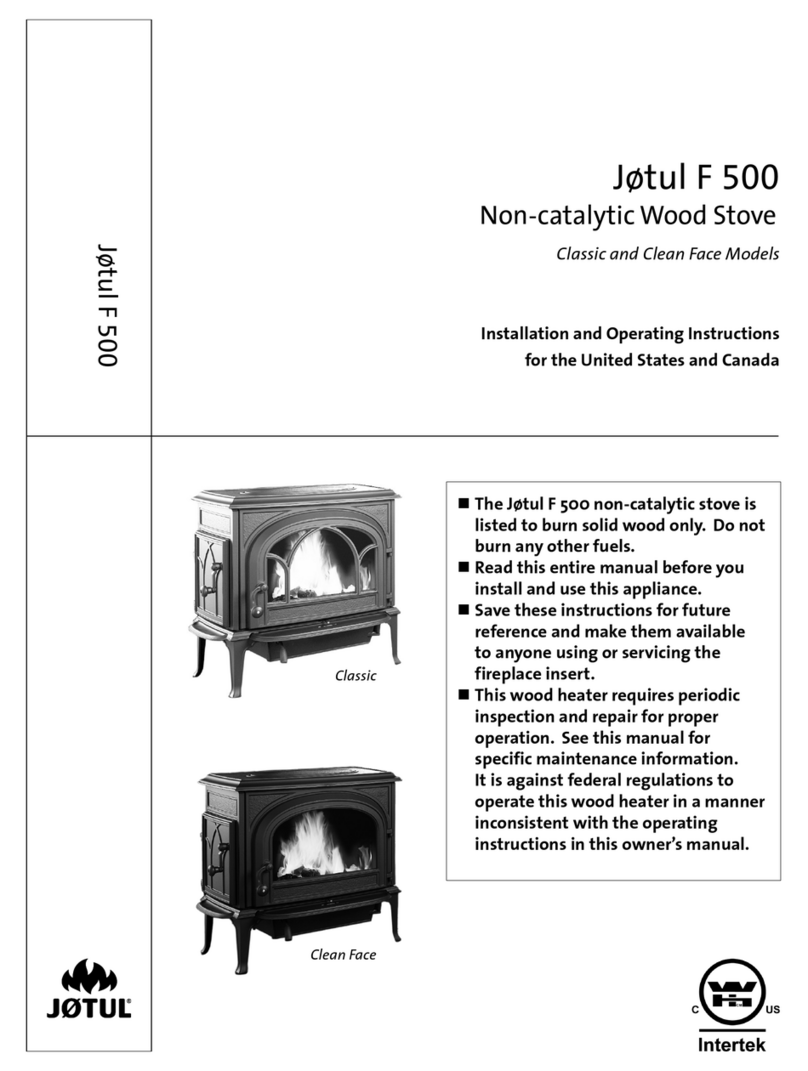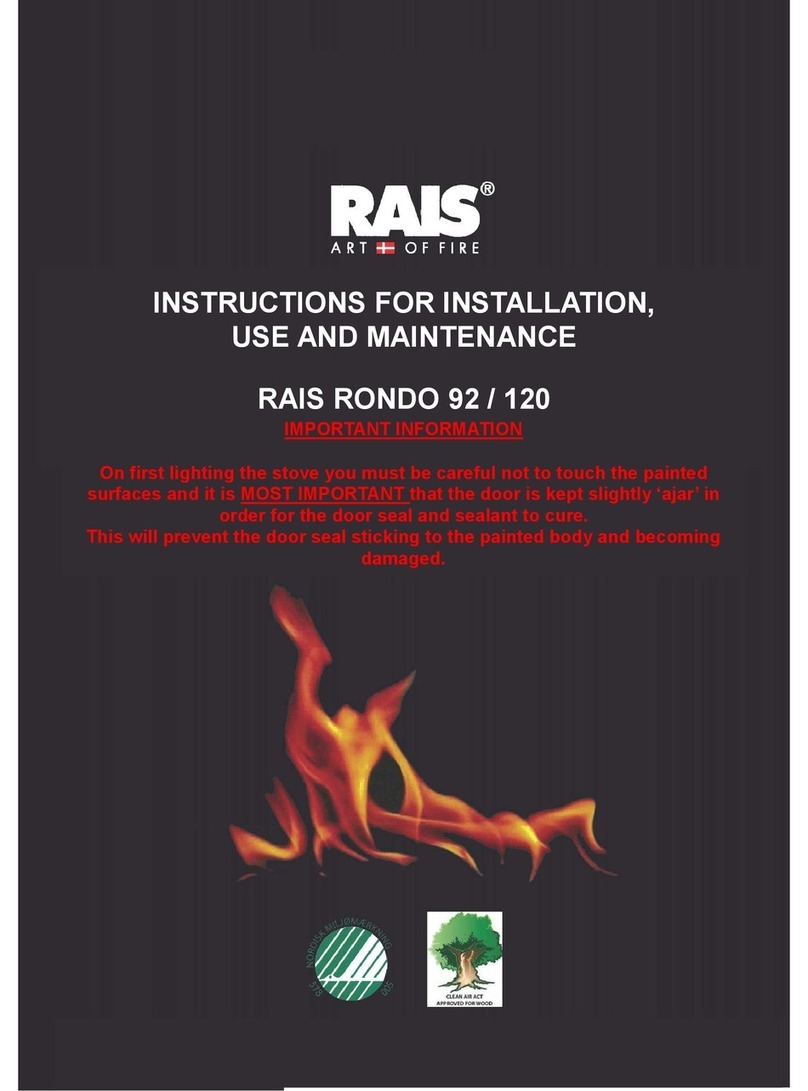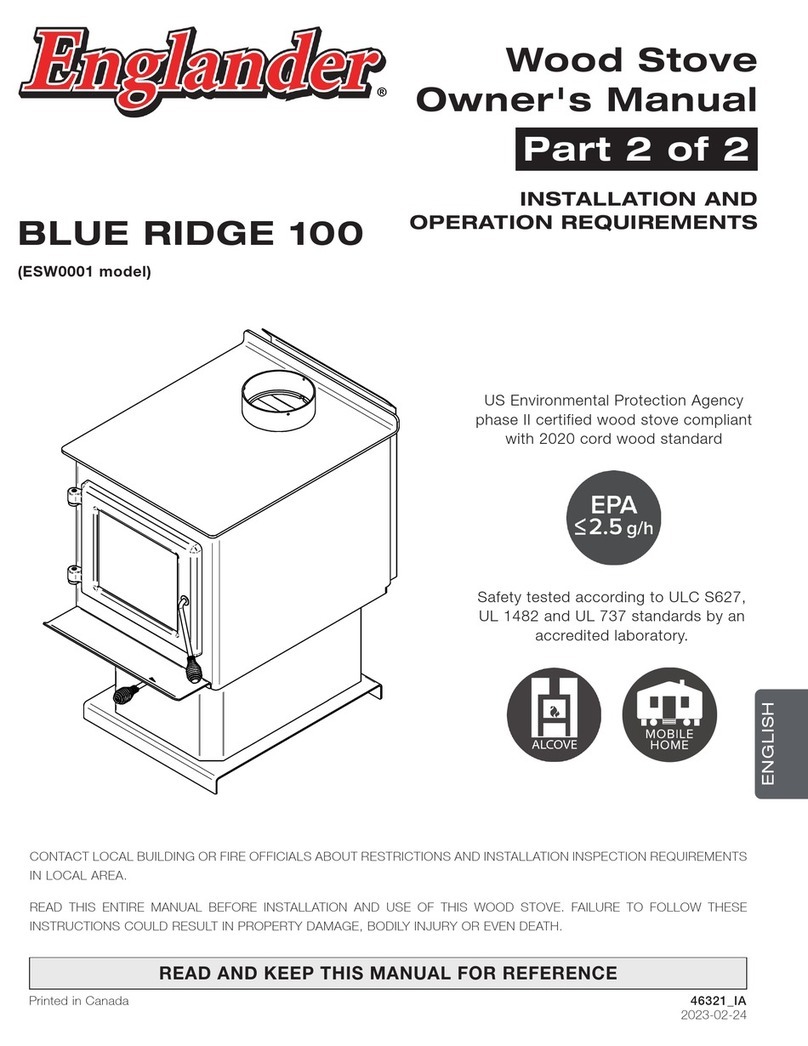
Page 10 of 20 pages
Floor plate
European, national and local regulations must be observed in terms of the size and thickness of a non-
combustible floor covering the floor in front of the combustion chamber opening. Ask your HWAM
retailer for assistance. The combustion chamber opening is 38.2 cm wide.
Distance to combustible materials
Min. distances - uninsulated flue gas pipe
(drawing A)
HWAM 4340
HWAM 3130
1. Recommended for brick wall 10 cm
1. For combustible back wall 10 cm
2. For combustible side wall 20 cm
1.To combustible wall,corner installation, 45º13 cm
3. Distance to furnishings in front 80 cm
Remember to pay attention to applicable regulations concerning the required distance
between the wall and smoke pipe.
The distance to a brick wall is set to faciliate the servicing of the HWAM®SmartControlTM..
Please be aware that not all glass parts are heat-resistant. For this reason, a glass wall should sometimes
be treated as a combustible wall, in which case we ask you to contact your local chimney sweep or
glass producer to hear at what distance the stove should be kept from glass.
Requirements for chimney and smoke pipe
The height of the chimney must ensure sufficient draught and prevent any smoke nuisance. As a general
rule, satisfactory draught conditions are achieved if the chimney is 4 m above the stove and at least
80 cm above the ridge. If the chimney is placed at side walls, the top of the chimney should always
be higher than the ridge or the tallest point of the roof. Always be aware of any national and/or local
regulations applying to thatched roofs and the location of the chimneys.
The stove requires a minimum draught of 12 Pa (measured at EN 13240 measurement point). If mea-
sured just above the smoke flue socket, the chimney draught must be 18-20 Pa.
The chimney must have a minimum clearing of Ø 150 mm. The chimney must be provided with an easily
accessible cleaning door. The chimney and flue duct must be of flue class T400 and be CE marked.
Furthermore, it must have obtained the classification of G in soot fire testing. The required distance
to combustible material must be complied with in accordance with the brand label. Ask your HWAM
retailer for further information.
Changing the smoke outlet from top outlet to back outlet, HWAM 3120 (drawing E)
1. Lift the cast-iron top (1) off the stove
2. Remove the two sides of the stove by loosening the screw (2) and removing it. The two screws
(3) should only be loosened (not removed). Lift the sides off.
3. Open the metallic tabs (4) and take the wires out.
4. Pull the lambda sensor coupling (5) free of the wire fastener (6).
5. Remove the heat shield (7) and wire fastener (6) by removing the two screws (8).
6. Remove the cover plate (9).
7. Remove the flue ring (10) and fasten it to the rear of the stove.
8. Use a soft faced hammer, for instance, to break off the top of the heat shield (11) and the wire
fastener (12).
9. Fasten the heat shield (7) and wire fastener (6) to the stove again.


